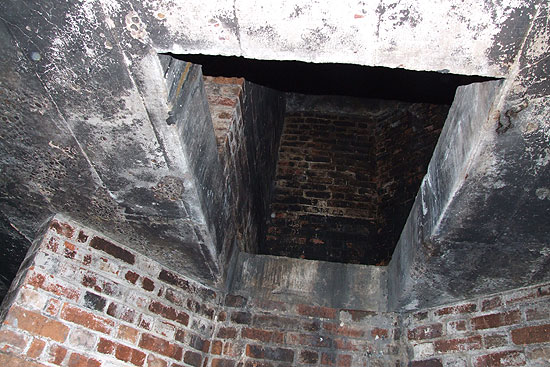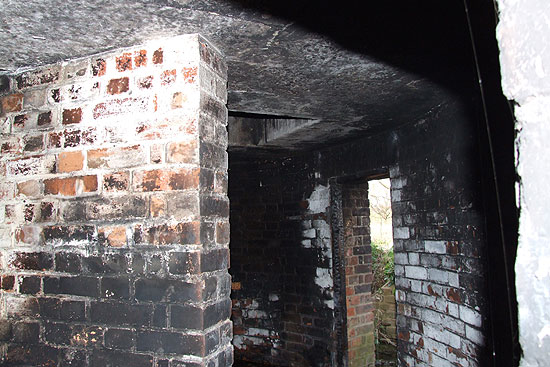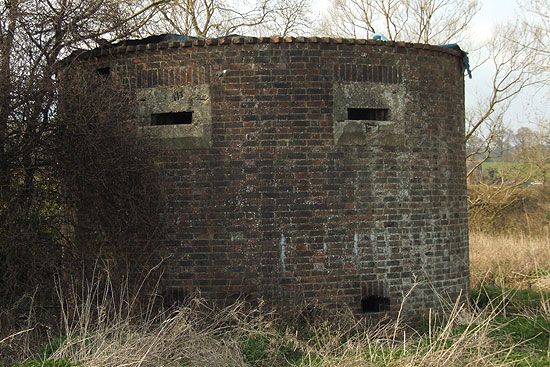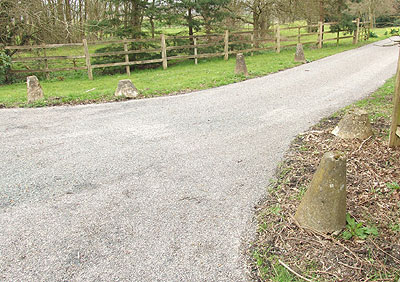Two-storey pillbox
Posted: 25 March 2007 23:06
Having just acquired a car, I decided to get out and about and take in some anti-invasion defences that are harder to get to on bike.
I drove out to Udiam (just east of Robertsbridge, a few miles north of Battle) to take a look at a pillbox I've been meaning to visit for some time.

Situated just beside the B2244, this pillbox is unusual in that it has two storeys, allowing it to command the road as well as the low-lying ground on its flanks. The circular shape is possibly an indication that it was designed to be camouflaged as an oast house.
About 200m south, the road crosses over the River Rother, the line of which at this point formed part of a Corps stop line.
Unfortunately, as it stands on low ground beside a small stream, the ground floor was flooded several inches deep, and access to the upper level (photo below) was denied by the absence of steps, so I didn't really get inside it.

However, I did get some photographs through the embrasures. There's five sets of these, both upper and lower; the lower ones are quite small, while the upper ones are full-sized, and may have proper weapons mountings.

The interior has unfortunately seen many fires, and the walls are black.

Moving south down the road, I crossed over the Rother and found a cluster of roadblock buoys at the entrance to a drive.

This drive was actually a railway line until the 1960's and so it's no surprise to find these obstacles at the site of a level crossing. A proper railblock was sited away to the west.
On my way again, I drove past at least two other sets of buoys, but there was nowhere to pull over and take a closer look.
I was getting quite close to Cripp's Corner, a nodal point noted for its lines of large anti-tank cubes; I didn't have time to stop today, but I may try and return during the coming weeks.
- Pete

Email:
Blog Latest

Bishopstone reveals its pillbox secrets
18 October 2021

Pillbox or Observation Post?
10 June 2020

Uncovering the hidden secrets of a pillbox
8 June 2019

Review of 2018
31 December 2018

Wartime Christmas in East Sussex (2)
24 December 2018
Jargon-buster
Buoys
Small concrete roadblock obstacle comprising a truncated cone with domed base. A hollow shaft down the centre allowed the buoy to be manhandled using a crowbar. Buoys were deemed of little value by 1941 and cylinders seen as a better solution.
Cubes
Anti-tanks blocks, popularly known as dragon's teeth. Not to be confused with smaller blocks known as pimples, cubes can be upwards of 1m square. Many examples in Sussex have apexes or chamfered edges, leading to them being incorrectly recorded as coffins.
Embrasure
A loophole or slit that permits observation and/or weapons to be fired through a wall or similar solid construction.
Nodal Point
Defended road junction(s), usually within a village/town with a Home Guard garrison intended to deny enemy use of the roads. Nodal Points were not to defend the village, but solely the road network. Category 'A' Nodal Points were to hold out for 7 days after invasion without outside assistance.
Pillbox
Generic term for a hardened field defensive structure usually constructed from concrete and/or masonry. Pillboxes were built in numerous types and variants depending on location and role.
Stop line
A physical continuous anti-tank barrier, normally a river and/or railway line, often defended by pillboxes. Stop line crossings (roads, railways and bridges) were to be made impassable.
This site is copyright © Peter Hibbs 2006 - 2024. All rights reserved.
Hibbs, Peter Two-storey pillbox (2024) Available at: http://www.pillbox.org.uk/blog/216524/ Accessed: 19 April 2024
The information on this website is intended solely to describe the ongoing research activity of The Defence of East Sussex Project; it is not comprehensive or properly presented. It is therefore NOT suitable as a basis for producing derivative works or surveys!